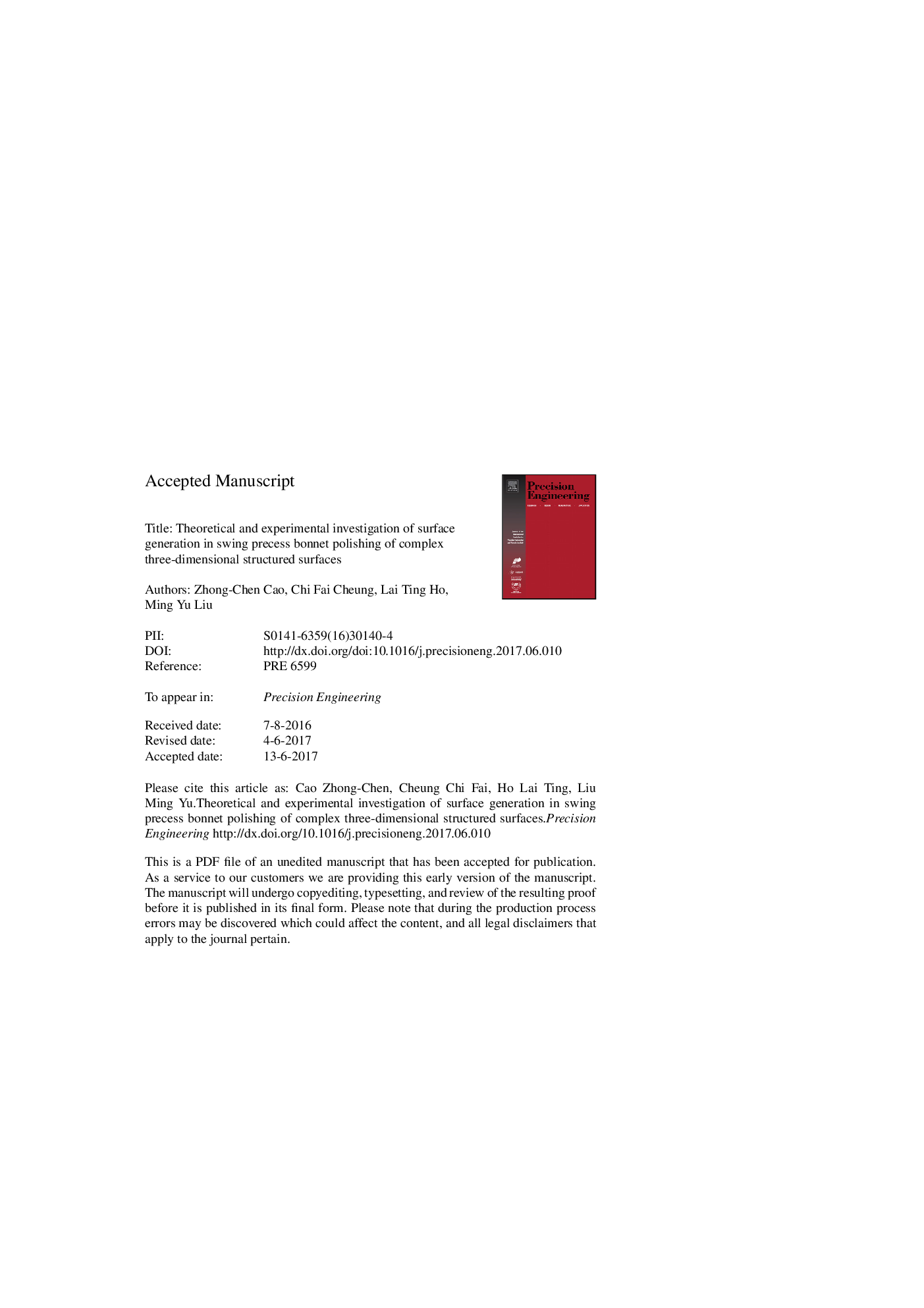| Article ID | Journal | Published Year | Pages | File Type |
|---|---|---|---|---|
| 5019056 | Precision Engineering | 2017 | 32 Pages |
Abstract
Three-dimensional structured surfaces (3D-structured surfaces) possessing specially designed functional textures are widely used in the development of advanced products. This paper presents a novel swing precess bonnet polishing (SPBP) method for generating complex 3D-structured surfaces which is accomplished by the combination of specific polishing tool orientation and tool path. The SPBP method is a sub-aperture finishing process in which the polishing spindle is swung around the normal direction of the target surface within the scope of swing angle while moving around the center of the bonnet. This is quite different from the 'single precess' and 'continuous precessing' polishing regime, in which the precess angle is constant. The technological merits of the SPBP were realized through a series of polishing experiments. The results show that the generation of complex 3D-structured surfaces is affected by many factors which include point spacing, track spacing, swing speed, swing angle, head speed, tool pressure, tool radius, feed rate, polishing depth, polishing cloth, polishing strategies, polishing slurry, etc. To better understand and determine the surface generation of complex 3D-structured surfaces by the SPBP method, a multi-scale material removal model and hence a surface generation model have been built for characterizing the tool influence function and predicting the 3D-structured surface generation in SPBP based on the study of contact mechanics, kinematics theory, abrasive wear mechanism, and the convolution of the tool influence function and dwell time map along the swing precess polishing tool path. The predicted results agree reasonably well with the experimental results.
Keywords
Related Topics
Physical Sciences and Engineering
Engineering
Industrial and Manufacturing Engineering
Authors
Zhong-Chen Cao, Chi Fai Cheung, Lai Ting Ho, Ming Yu Liu,
